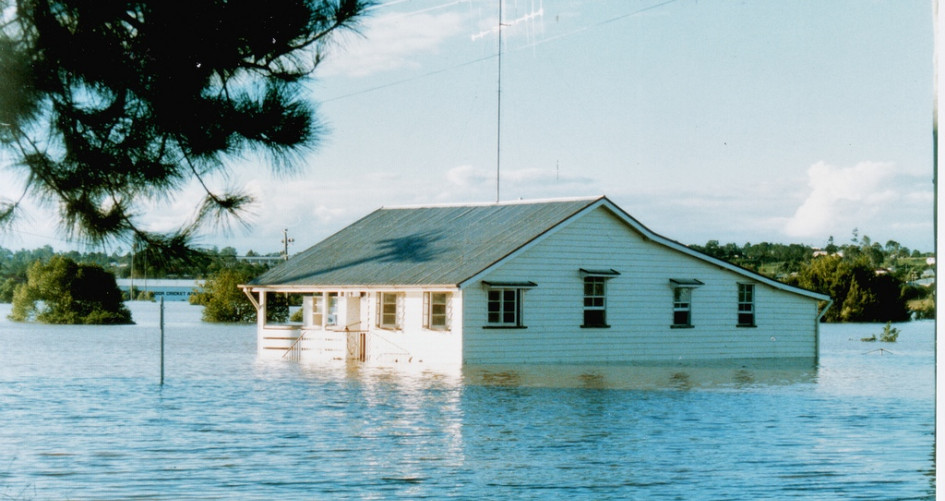Natural disasters are occurring nearly five times as often as they were in the 1970s, with both developed and developing countries bearing the burden of repeated floods, droughts and temperature extremes. A new report by the World Meteorological Organization entitled Atlas of Mortality and Economic Losses from Weather, Climate and Water Extremes (1970–2012) compiles information on the number of lives lost or affected and the impact on economies and livelihoods. This can be used to estimate future risks and can support practical measures to reduce potential impacts, such as investing in early warning systems.
The eight graphs below taken directly from the report illustrate the rising human and economic costs of these climate-related natural disasters.
1) We're going to need a bigger boat – or flood defences

Key: Dark blue = floods. Light blue = mass movement wet. Green = storms. Yellow = drought. Magenta = extreme temperature. Orange = Wildfires Photograph: /WMO Flooding and mega-storms were by far the leading cause of disaster from 2000-2010. About 80% of the 3,496 disasters of the last decade were due to flooding and storms. Seas are rising because of climate change. So are extreme rain storms. There is growing evidence that warming temperatures are increasing the destructive force of hurricanes.
2) Heat waves are the new killer

Key: Dark blue = floods. Light blue = mass movement wet. Green = storms. Yellow = drought. Magenta = extreme temperature. Orange = Wildfires Heat waves didn't even register as a threat in the 1970s. By 2010, they were one of the leading causes of deaths in natural disasters, along with storms. In Russia alone, more than 55,000 people died as a result of heat wave in 2010.
3) Floods are getting more costly

Key: Dark blue = floods. Light blue = mass movement wet. Green = storms. Yellow = drought. Magenta = extreme temperature. Orange = Wildfires Disasters were about 5.5 times more expensive by 2010 than they were in the 1970s, and most of that was because of the rising losses due to floods. The cost of disasters rose to $864bn (£505bn) in the last decade.
4) Nearly all of the 8,835 disasters – about 89% - were due to flooding and storms
5) But storms were by far the bigger threat to life accounting for about 1.45m of the 1.94m global disaster deaths. Drought was the next big killer, mainly because of the horrific toll during the 1980s famine in Africa
6) About half of the $2390.7bn cost of disasters over the last 40 years was due to storms with hurricane Katrina and super storm Sandy, both in the US, accounting for $196.9bn of those damages
7) Droughts in East Africa in the 1970s and 1980s were the deadliest disasters of modern times, killing 600,000 in Ethiopia, Mozambique Somalia, and Sudan. But storms were also a big killer for Bangladesh
8) Hurricanes and other severe storms are taking an increasing toll on the US economy. Five of the costliest global disasters were in the US. All five were caused by storms, caused a total of $294bn in damage
